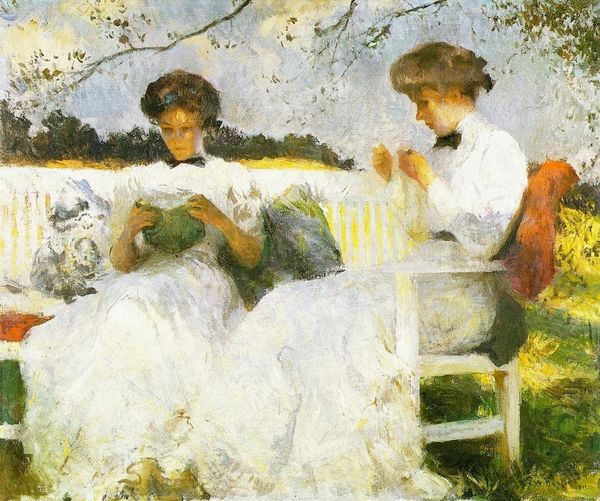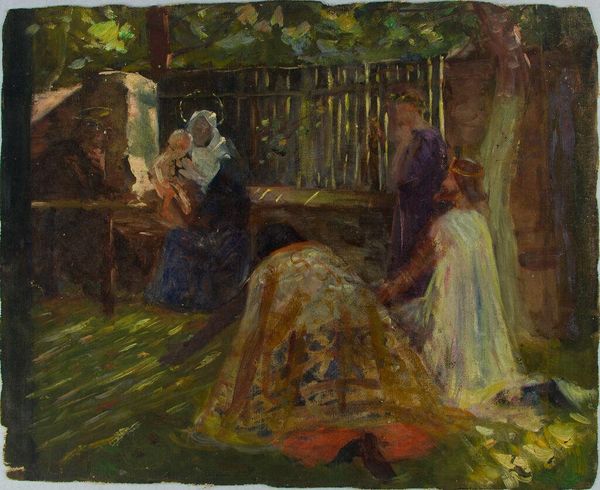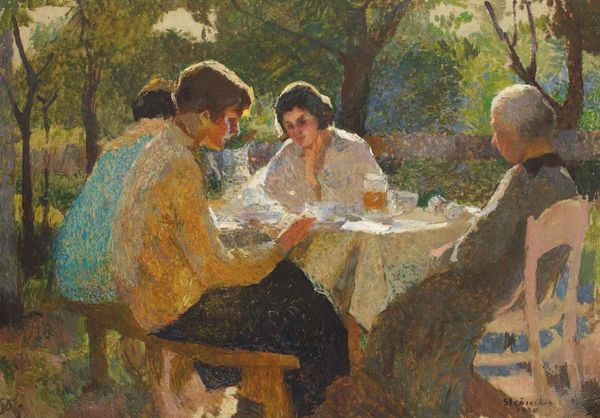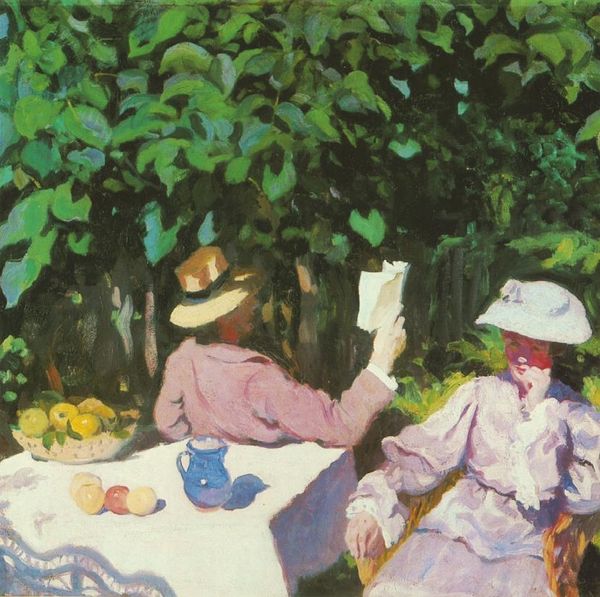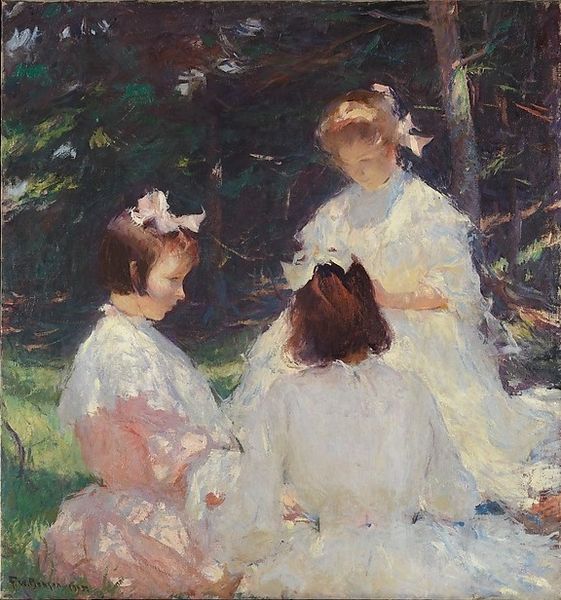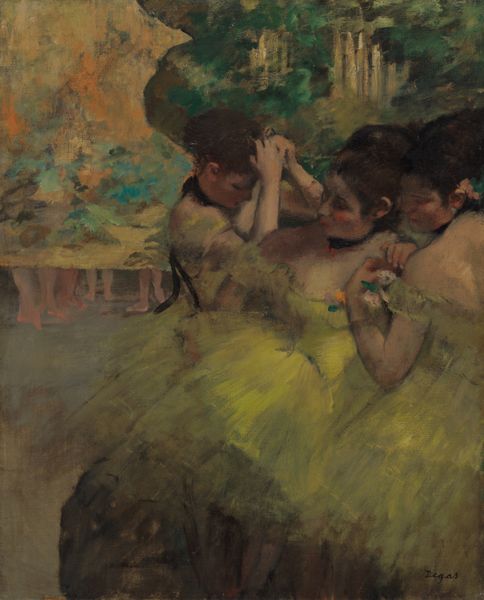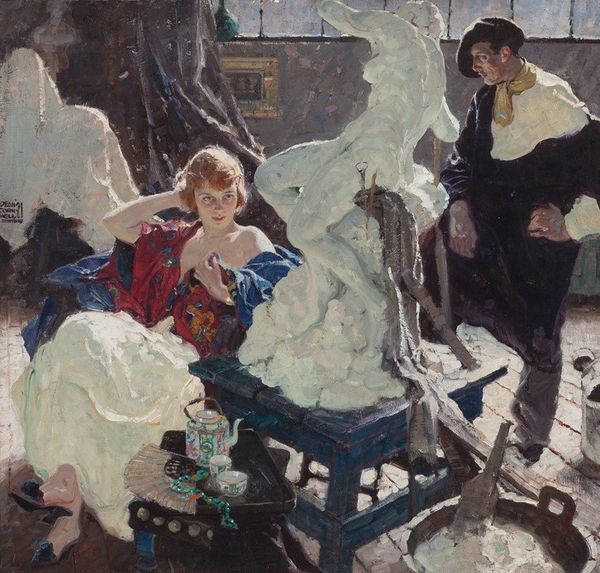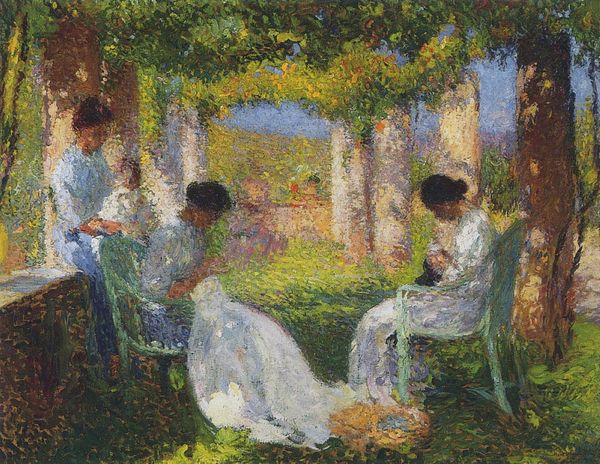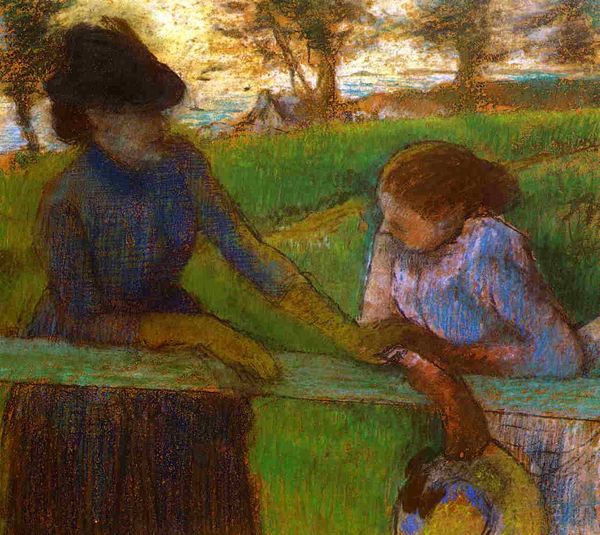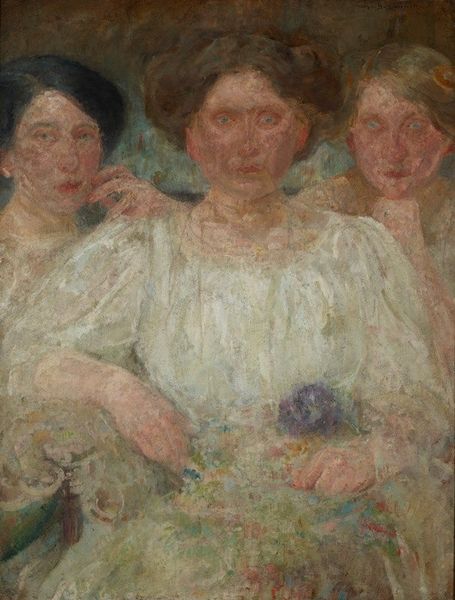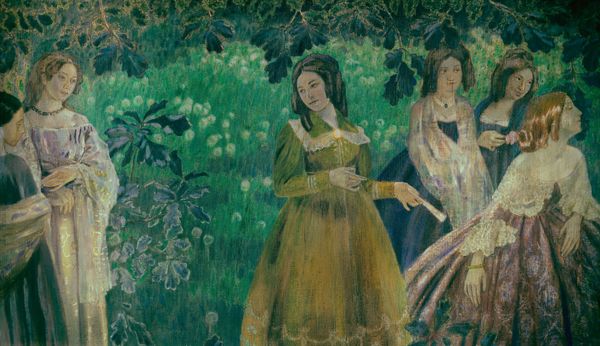
Copyright: Public Domain: Artvee
Editor: Leo Putz’s “The Picnic,” painted in 1903, renders a group of people enjoying a sunny afternoon. The colors are so vibrant, almost exaggerated! It’s playful and… well, kind of Fauvist, wouldn’t you say? What catches your eye when you look at this painting? Curator: The Fauvist label certainly applies in retrospect, but considering the cultural context of 1903, this piece exists within a fascinating transition. We see the lingering influence of Romanticism’s idyllic landscapes blended with a burgeoning interest in exploring purely visual sensation – light, color, brushstroke. This movement mirrors societal shifts. Who were the audiences for such leisure scenes, and what social class do you imagine them representing? Editor: Aristocrats, I would guess. Their fancy outfits, carefree leisure… the idea of a picnic seems pretty bourgeois to me. Curator: Exactly! It’s important to remember how paintings like these participated in constructing and reinforcing these class divisions. Who had the time and money for such elaborate outings? How were these images consumed by those who could only dream of participating in such a scene? Also, think about where paintings like these were displayed, usually private collections, further solidifying their exclusivity. What is the role of paintings today, exhibited in museums and seen by the public? Editor: Well, now, a piece like this sparks discussions, doesn't it? Instead of just being passively enjoyed by the wealthy, it prompts critical analysis of social structures. Curator: Precisely! Our engagement with the piece actively shifts its function in the social sphere, from a marker of exclusivity to a starting point for a dialogue about power, class, and representation. Editor: That’s a really interesting way to frame it. It’s changed my view completely! Thanks!
Comments
No comments
Be the first to comment and join the conversation on the ultimate creative platform.
